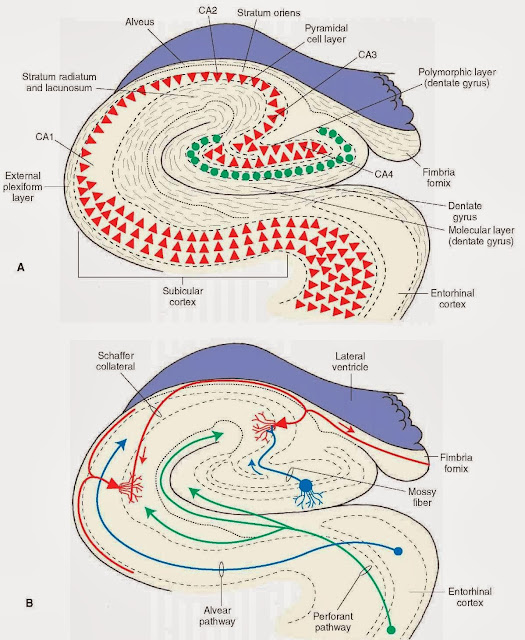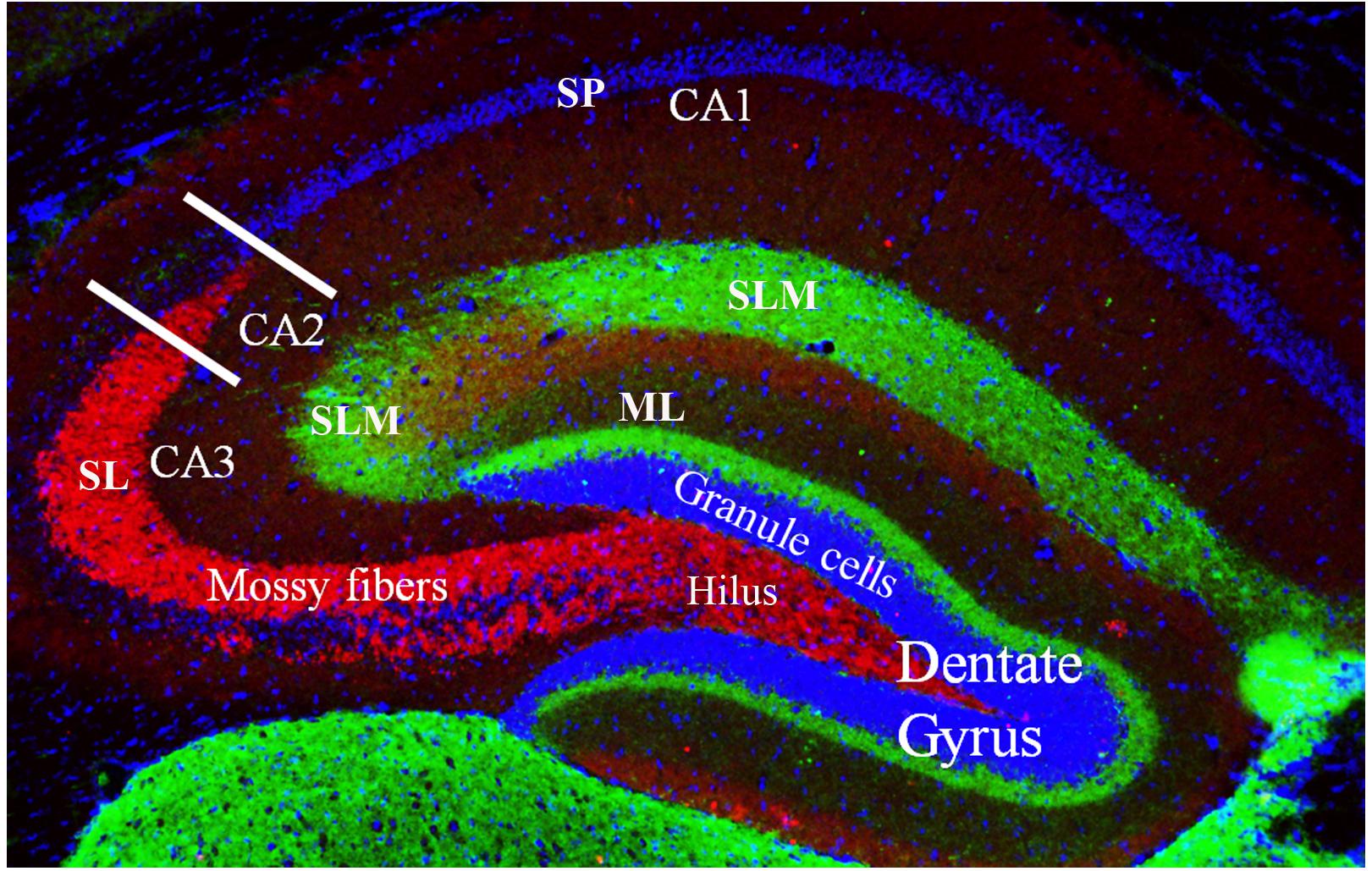
Scientists typically focus on connections within a hippocampal slice, depicted here by cross-sections made by the “cuts” through the hippocampus. Few of these types of axons had been observed in the CA1. Although scientists had previously noted that some axons run longitudinally through the CA3 and dentate gyrus, connecting to neighboring neurons in those regions (see image below), few studies had been done on those connections and they had generally been viewed as unimportant (see Amaral et al., 1991). Researchers often use LTP to measure the effects of potentially toxic proteins and peptides, such as Aβ. These slices have been the mainstay for studying long-term potentiation, a form of synaptic plasticity that is essential for learning and memory. This “lamellar” hypothesis, which posits that neurons communicate between these areas and less so within them, led scientists to rely principally on cross-sectional or transverse slices for electrophysiological experiments of the hippocampus. The prevailing notion about excitatory connections in the hippocampus is that they start in the dentate gyrus, project to the CA3, then on to CA1 and the subiculum (see image at left and Andersen et al., 1971). Fewer connections are thought to join similar cell types of the same region (looking into the screen). Historically, hippocampal connections are thought to go from dentate gyrus to CA3, on to CA1 and then the subiculum, as pictured in this cross-section. “Understanding how the hippocampus encodes and relays information is fundamental to understanding memory,” said Cha-Min Tang, University of Maryland School of Medicine, Baltimore, the senior author on the PNAS paper. Together, the papers highlight features of the hippocampus that have flown under the radar. And in the September 17 Neuron, researchers report that a large number of hippocampal axons sprout directly from dendrites, rather than neuronal bodies. A paper in the August 31 Nature Neuroscience describes how hippocampal neurons transmit signals backward through those transverse projections.

In the September 2 Proceedings of the National Academy of Sciences, researchers report that axons run lengthwise along the hippocampus, forming a potentially important cadre of synapses-this in addition to the well-described transverse projections that researchers study in hippocampal slices.

How well do neuroscientists know their favorite seahorse? A trio of recent studies suggests that its connections and morphology are more complex than textbooks describe. It also plays a crucial role in learning and memory, and it is compromised in people with Alzheimer’s disease. The hippocampus contains some of the best-studied neural circuits in the brain.


 0 kommentar(er)
0 kommentar(er)
